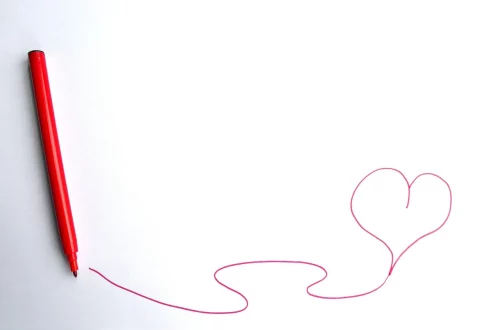
Understanding Jacob’s Ladder Piercing Cost and What to Expect
Understanding body modifications, particularly piercings, has gained significant popularity in recent years. Among the various types of piercings, the Jacob’s Ladder piercing stands out due to its unique placement and aesthetic appeal. This specific body modification involves a series of piercings that are typically arranged in a vertical line along the back or the side of a body part, commonly the torso. The intricate design allows for multiple jewelry pieces to be worn simultaneously, creating a striking visual impact that attracts many enthusiasts and newcomers alike.
The allure of Jacob’s Ladder piercings extends beyond their visual appeal; they also represent a form of self-expression and personal identity. However, before diving into this body modification, it is crucial for individuals to understand the various factors that contribute to its cost and what to expect throughout the process. From the initial consultation to aftercare, each step plays a significant role in the overall experience. As with any body modification, it is essential to be informed and prepared, ensuring that individuals can make the best choices for their health and aesthetic desires.
Factors Influencing Jacob’s Ladder Piercing Costs
When considering the cost of a Jacob’s Ladder piercing, it is essential to understand the various factors that can influence the final price. One of the most significant elements is the location of the piercing studio. Urban areas typically have higher costs due to increased overhead expenses, while rural areas might offer more affordable options. Additionally, the reputation and experience of the piercer can greatly impact the price. Highly skilled piercers with a solid portfolio might charge more for their expertise, reflecting the quality of their work.
Another critical factor is the type of jewelry chosen for the piercing. Jacob’s Ladder piercings often involve multiple pieces of jewelry, and the materials can vary widely. For instance, surgical steel, titanium, and gold are common materials, each with different price points. The choice of gemstones or intricate designs can further elevate the cost. Therefore, it’s important to consider not just the piercing fee but also the investment in high-quality jewelry that complements the overall aesthetic.
Additionally, the complexity of the piercing itself may affect the price. Jacob’s Ladder piercings are not a single piercing but rather a series of piercings, which may require more time and skill to execute properly. This complexity might lead to higher labor costs, reflecting the piercer’s time and expertise. Furthermore, some studios may include aftercare products or services in their pricing, which can also influence the overall cost. Considering these factors can help individuals better prepare for the financial commitment associated with a Jacob’s Ladder piercing.
What to Expect During the Piercing Process
Understanding what to expect during the Jacob’s Ladder piercing process can help alleviate any anxiety and ensure a smooth experience. The journey typically begins with a consultation, during which the piercer discusses the procedure, placement, and any concerns the client may have. This initial conversation is crucial for establishing a rapport and ensuring that the client feels comfortable with their chosen piercer.
Once the consultation is complete, the actual piercing process begins. The piercer will clean the area thoroughly and mark the spots where the piercings will be placed. It is vital for clients to communicate openly during this stage, as they may want to adjust the marks before the procedure starts. Once everything is set, the piercer will use a sterilized needle to create the piercings, which may involve a bit of discomfort. However, many clients report that the pain is manageable and brief.
After the piercings are completed, the piercer will provide aftercare instructions. This step is crucial for ensuring proper healing and preventing complications. Clients should be prepared to follow these guidelines closely, as neglecting aftercare can lead to infections or other issues. Additionally, understanding the healing process is vital; Jacob’s Ladder piercings may take time to heal fully due to their nature. Clients should be patient and attentive during this period, as it will greatly impact the longevity and appearance of their new piercings.
Aftercare and Healing Process
Proper aftercare is essential for any piercing, and Jacob’s Ladder piercings are no exception. Once the piercings are completed, following the piercer’s aftercare instructions is crucial for ensuring optimal healing. Typically, this includes cleaning the piercings with a saline solution or a recommended antiseptic solution. This practice helps to keep the area free from bacteria and promotes healing.
Clients should also avoid touching the piercings with unwashed hands, as this can introduce harmful bacteria. It is advisable to refrain from swimming in pools, hot tubs, or natural bodies of water during the healing process, as these environments can harbor bacteria that may lead to infections. Additionally, wearing loose-fitting clothing can help prevent irritation around the piercing sites.
The healing time for Jacob’s Ladder piercings can vary. On average, it may take several weeks to a few months for the piercings to heal completely. During this time, clients may experience some swelling, redness, or tenderness around the piercings, which is normal. However, if any severe symptoms arise, such as excessive pain, discharge, or prolonged swelling, it is crucial to seek professional advice from a healthcare provider or an experienced piercer.
Understanding the aftercare and healing process is vital for maintaining the integrity of the piercings. Following the recommended guidelines not only facilitates a smoother healing journey but also ensures that the piercings look great for years to come.
Choosing the Right Piercer for Your Jacob’s Ladder Piercing
Selecting the right piercer is one of the most critical steps in the process of getting a Jacob’s Ladder piercing. The experience and skill level of the piercer can greatly influence the overall outcome and safety of the procedure. Prospective clients should conduct thorough research before making a decision. Start by looking for reviews and testimonials from previous clients, as these can provide valuable insights into the piercer’s expertise and the studio’s environment.
Visiting the piercing studio in person is also an essential step. This allows clients to assess the cleanliness of the facility and the professionalism of the staff. A reputable piercing studio will adhere to strict hygiene standards, ensuring that all tools are sterilized and that the environment is safe for clients. During the visit, potential clients should feel comfortable asking questions about the piercing process, aftercare, and any concerns they may have.
Additionally, it is essential to ensure that the piercer is licensed and follows local health regulations. Some regions require specific certifications for body piercers, which can serve as an assurance of their training and competency. Ultimately, choosing a knowledgeable and experienced piercer will contribute significantly to a positive Jacob’s Ladder piercing experience.
In conclusion, while the allure of Jacob’s Ladder piercings can be enticing, it is essential to approach the process with care and consideration. From understanding the costs involved to recognizing the importance of aftercare, being informed can lead to a more satisfying experience. Remember, this article is for informational purposes only and should not be considered medical advice. Always consult with a healthcare professional regarding any health concerns or conditions.




